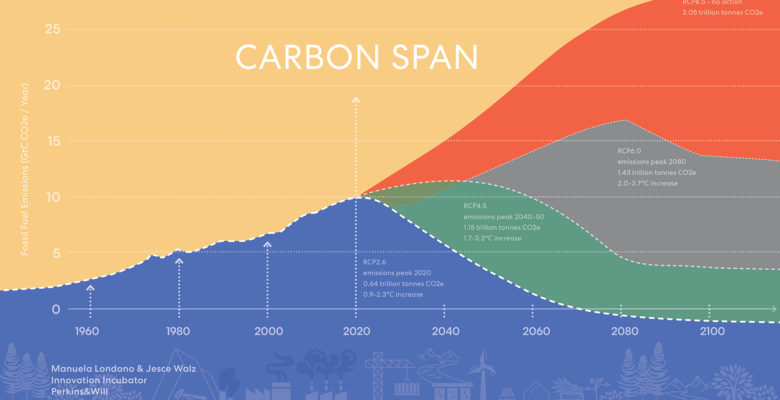In response to the current climate crisis, we must establish widespread familiarity with carbon and its cumulative impacts, elevate our critique of sustainable design, and embrace our part in balancing the carbon budget.
We set out to understand a project’s global warming potential by looking at inflows and outflows of carbon, and identified key contributors that can be quantified for most projects with information typically available to the design team:
• Embodied Carbon
• Operational Energy
• Renewable Energy
• Site materials and site planting
• Carbon offsets for long-term sequestration
We developed a Carbon-Span Calculator to compare these impacts alongside one another, and to assess interventions to achieve carbon neutrality. Balancing carbon requires reduction, substitution, and sequestration. Each of these measures offers low-hanging fruit that can be applied to most projects with clear impact. However, true carbon neutrality requires consideration of ecological impacts across scales. Through study of the carbon cycle and carbon calculation across variables, we begin to develop a holistic understanding of the levers available to achieve carbon balance.
Read the full report here.

